- Главная
- Разное
- Бизнес и предпринимательство
- Образование
- Развлечения
- Государство
- Спорт
- Графика
- Культурология
- Еда и кулинария
- Лингвистика
- Религиоведение
- Черчение
- Физкультура
- ИЗО
- Психология
- Социология
- Английский язык
- Астрономия
- Алгебра
- Биология
- География
- Геометрия
- Детские презентации
- Информатика
- История
- Литература
- Маркетинг
- Математика
- Медицина
- Менеджмент
- Музыка
- МХК
- Немецкий язык
- ОБЖ
- Обществознание
- Окружающий мир
- Педагогика
- Русский язык
- Технология
- Физика
- Философия
- Химия
- Шаблоны, картинки для презентаций
- Экология
- Экономика
- Юриспруденция
Что такое findslide.org?
FindSlide.org - это сайт презентаций, докладов, шаблонов в формате PowerPoint.
Обратная связь
Email: Нажмите что бы посмотреть
Презентация на тему Путешествие по Бостону
Содержание
- 2. WELCOME TO BOSTONBoston is the capital
- 3. Boston Common Park If you've
- 4. Boston at a GlanceBoston is certainly among
- 5. Boston, MassachusettsBoston is an energetic city, a
- 6. “Mayflower” Plymouth Rock
- 7. BOSTON is located on the Eastern coast of the Atlantic Ocean
- 8. Harbor in Boston
- 9. BOSTON COMMONS
- 10. Due to its size, Boston is a
- 11. Historical Sights of BostonOld StateHouse is one of the historical placeslocated on the Freedom Trail
- 12. Bunker Hill Monument "Don't fire until you see
- 13. Bunker Hill Monument
- 14. Boston City Hall Minutemen Statue
- 15. Heroes of the Revolution
- 16. Paul Revere House
- 17. Copley Square with Trinity Church
- 18. Boston has many nicknames due to historical
- 19. Six Flags
- 20. Cambridge
- 21. The oldest University in the United Stateswas founded in 1636 HARVARD UNIVERSITY
- 22. Would you like to study here? Harvard University
- 23. The First Calculator
- 24. Harvard University Library
- 25. Boston at Night
- 26. The Boston Red Sox play at Fenway Park, an outdoor baseball field
- 27. Baseball
- 28. Modern Boston
- 29. You are in Boston Downtown
- 30. Brake Dance
- 31. Independence Day
- 32. Museum of Science
- 33. WoW!!!
- 35. On the beach
- 37. Hooker
- 38. Zakim Bridge
- 39. Did you like a tour around boston?
- 40. Скачать презентацию
- 41. Похожие презентации
WELCOME TO BOSTONBoston is the capital of Massachusetts US, one of the 50 states of the USA and one of 13 original states



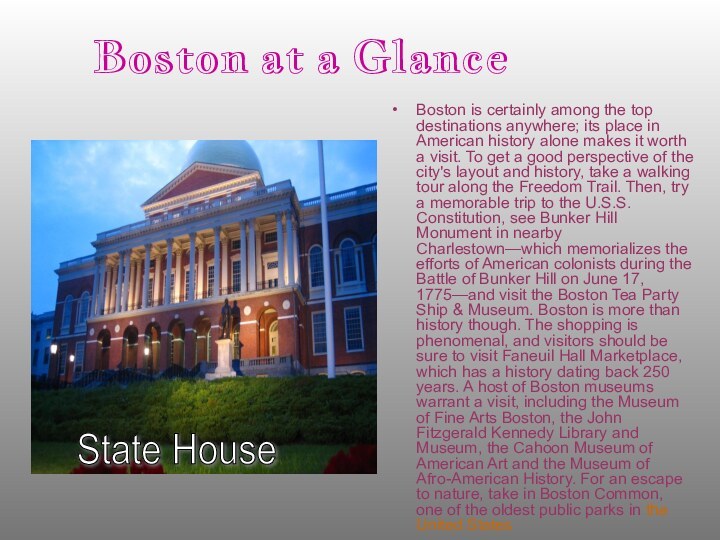




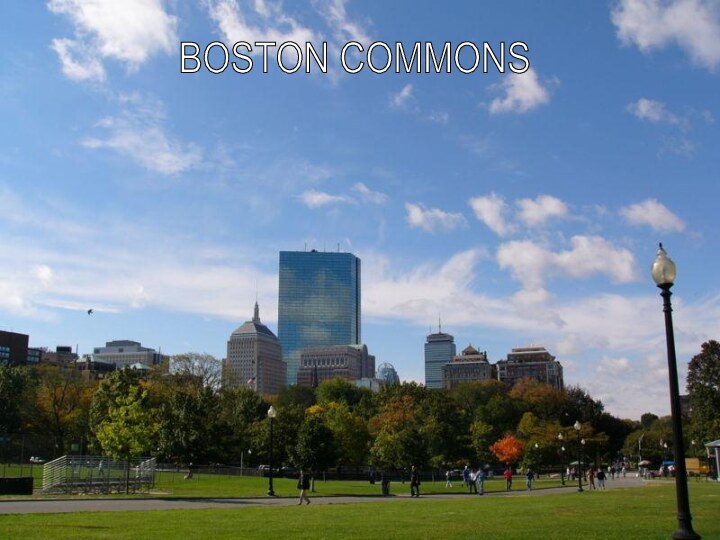
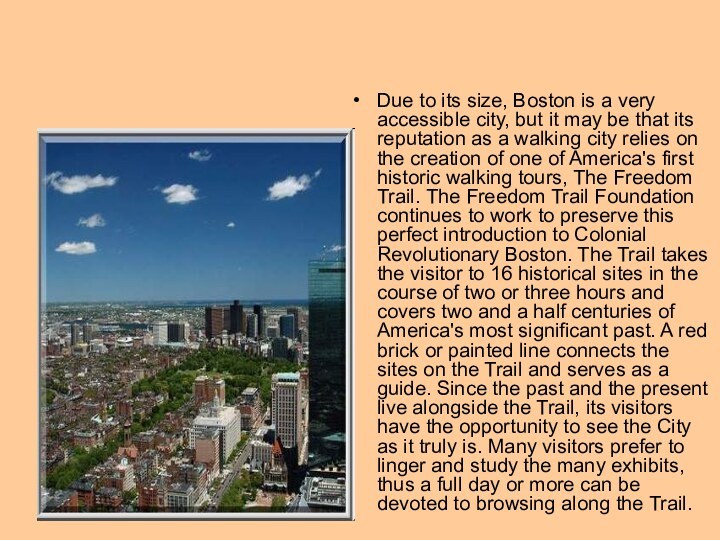

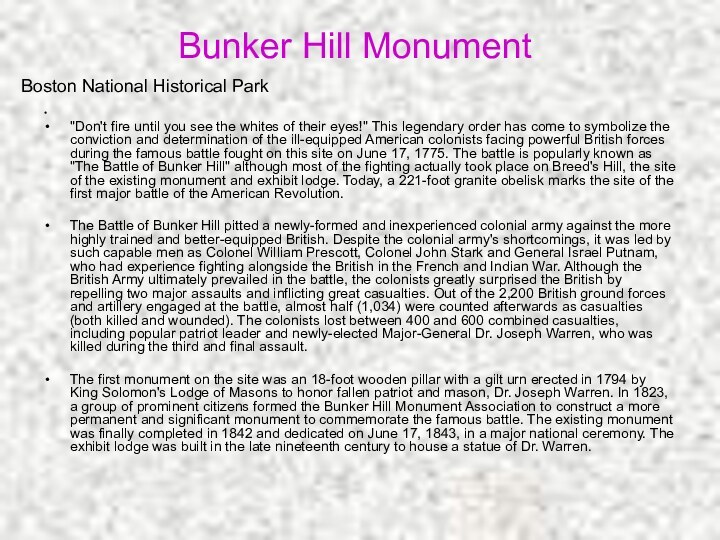

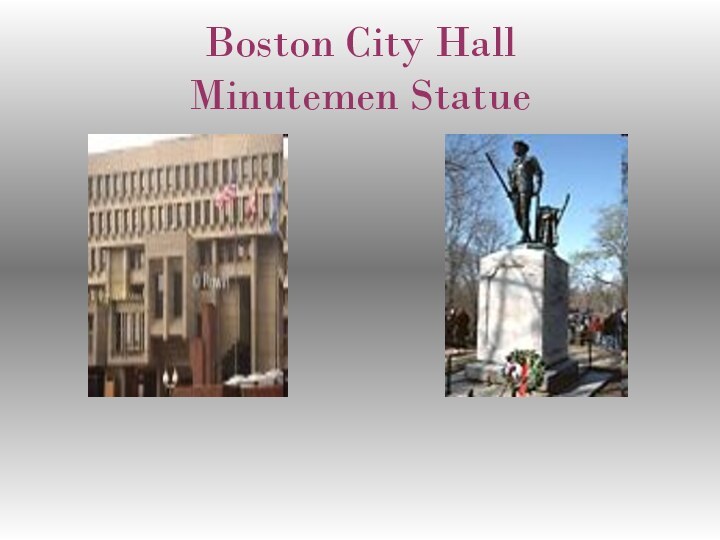
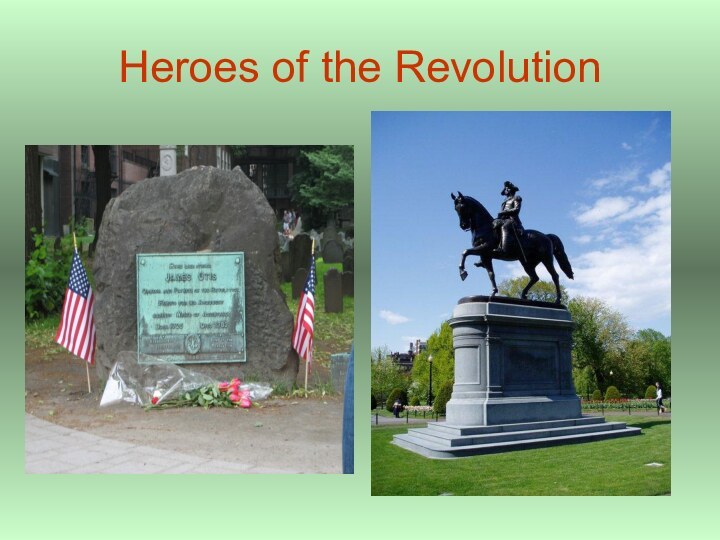
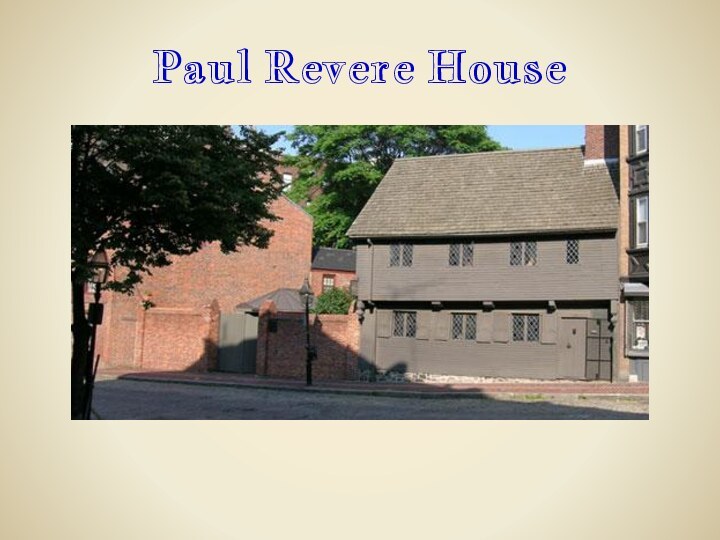

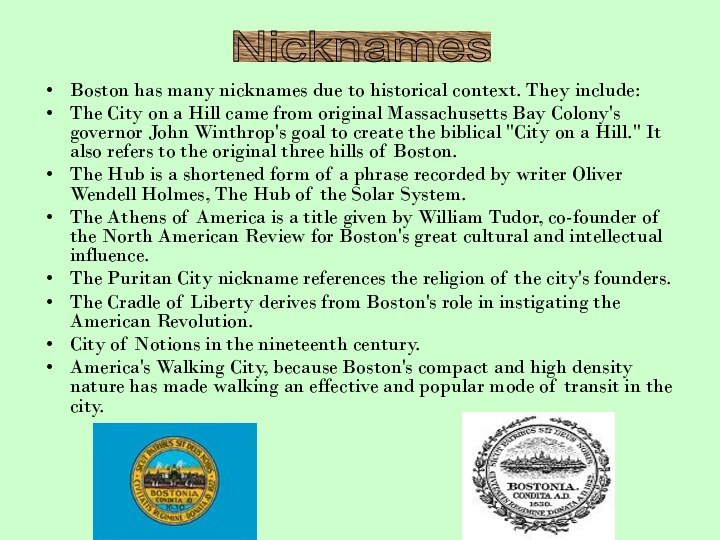
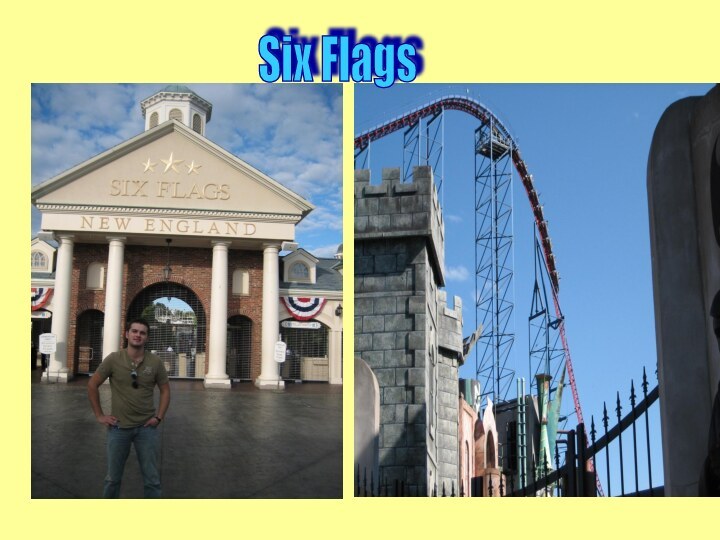
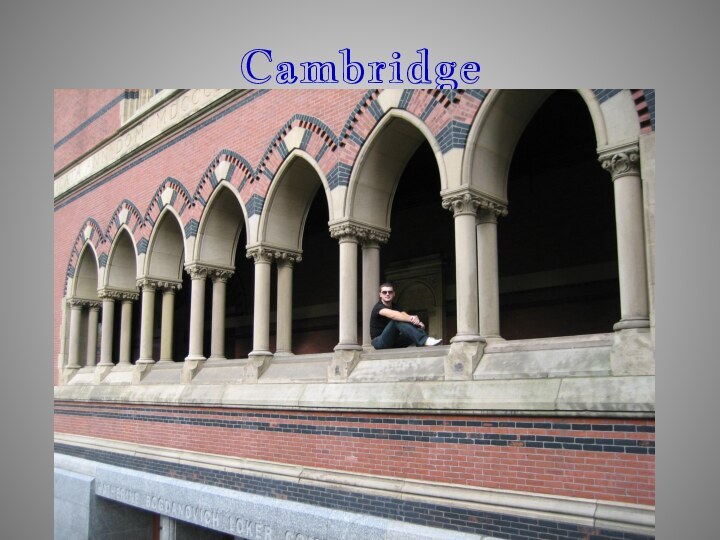
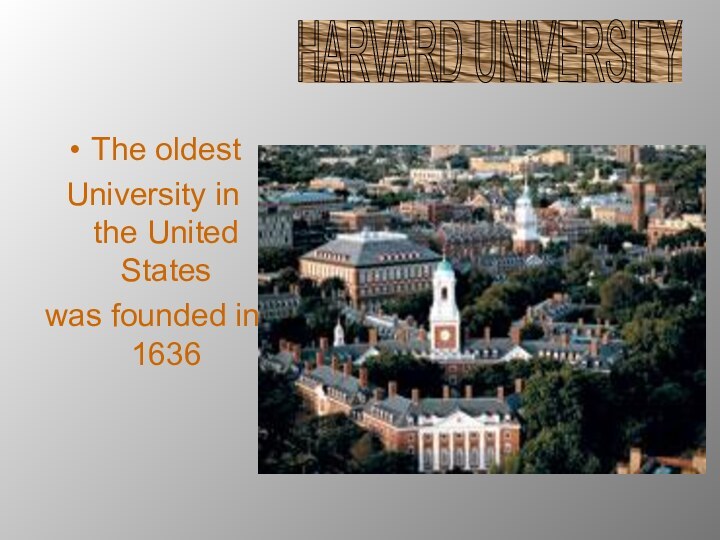



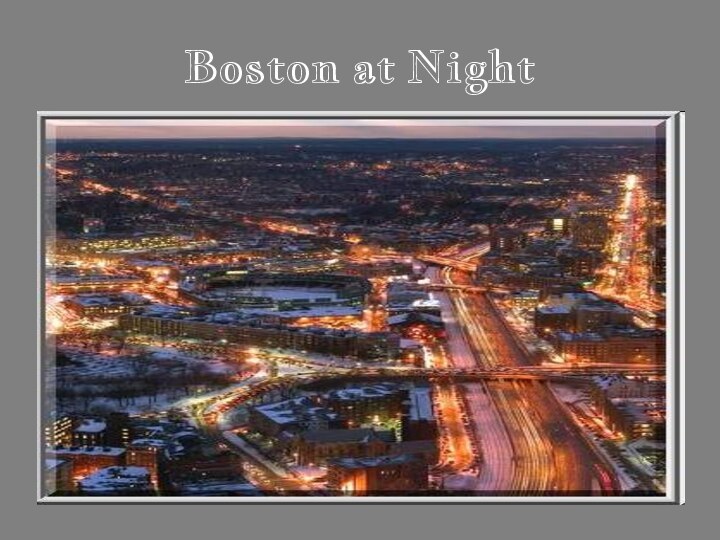


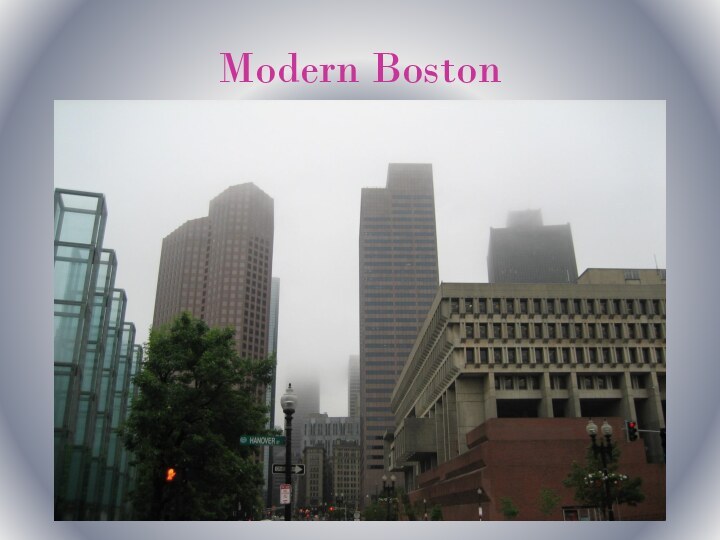



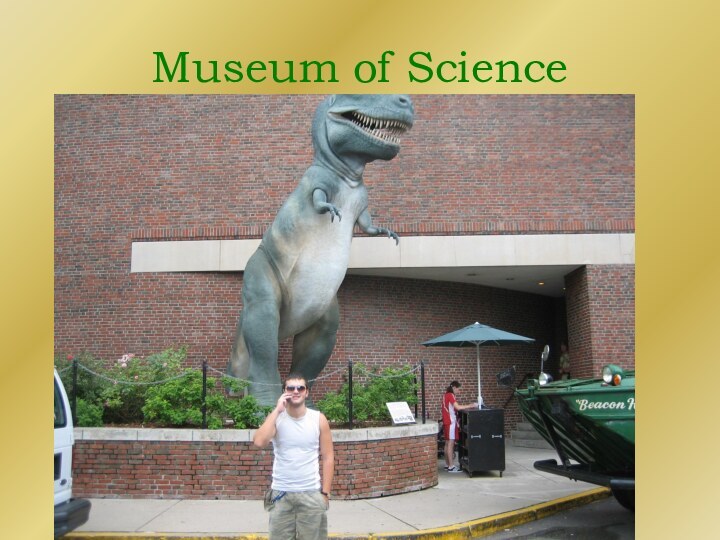



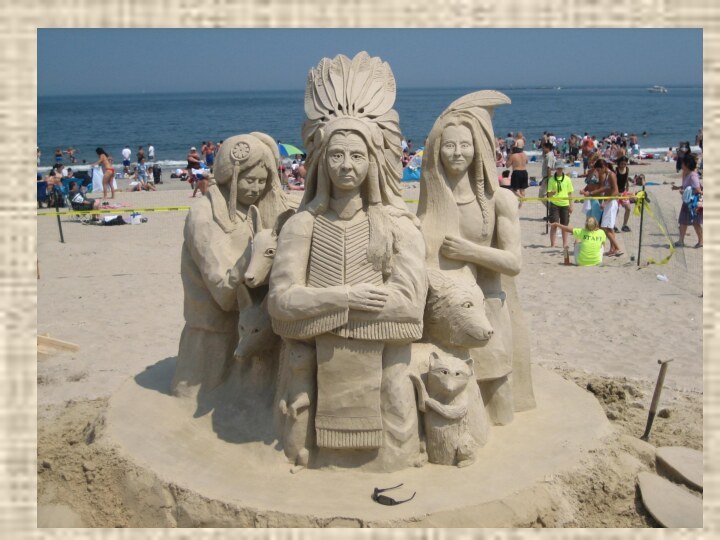
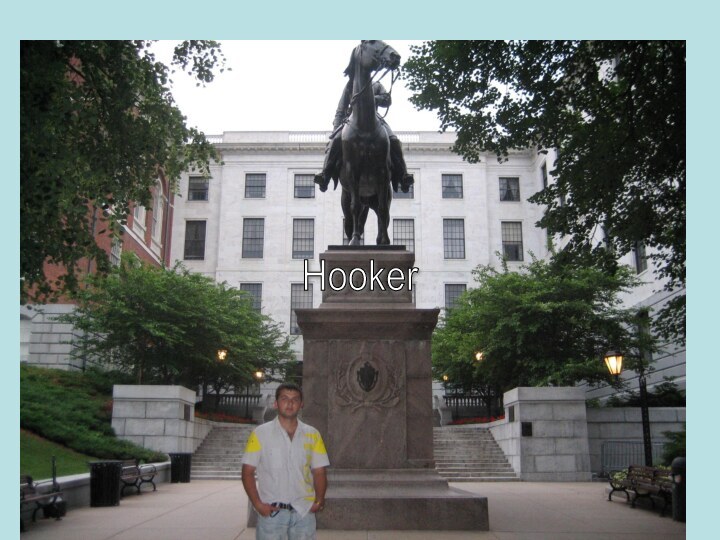



Слайд 3
Boston Common Park
If you've never
been to Boston and you're not sure that your
travels will ever take you to this much-loved city, spend a moment on a virtual cyber-visit to the landmarks and oft-visited sites that make Boston one of the most interesting cities in America and the world.Ready to begin?
Слайд 4
Boston at a Glance
Boston is certainly among the
top destinations anywhere; its place in American history alone
makes it worth a visit. To get a good perspective of the city's layout and history, take a walking tour along the Freedom Trail. Then, try a memorable trip to the U.S.S. Constitution, see Bunker Hill Monument in nearby Charlestown—which memorializes the efforts of American colonists during the Battle of Bunker Hill on June 17, 1775—and visit the Boston Tea Party Ship & Museum. Boston is more than history though. The shopping is phenomenal, and visitors should be sure to visit Faneuil Hall Marketplace, which has a history dating back 250 years. A host of Boston museums warrant a visit, including the Museum of Fine Arts Boston, the John Fitzgerald Kennedy Library and Museum, the Cahoon Museum of American Art and the Museum of Afro-American History. For an escape to nature, take in Boston Common, one of the oldest public parks in the United StatesState House
Слайд 5
Boston, Massachusetts
Boston is an energetic city, a city
of college students, business professionals and tourists--all walking hurriedly,
as if meandering slowly through Boston would never quite allow you to take it all in.Most of all, Boston is a city of enduring images past and present. Perhaps this collection of images will help you tо visit Boston seeing the sights and enjoying the mix of history and modernity
Слайд 10
Due to its size, Boston is a very
accessible city, but it may be that its reputation
as a walking city relies on the creation of one of America's first historic walking tours, The Freedom Trail. The Freedom Trail Foundation continues to work to preserve this perfect introduction to Colonial Revolutionary Boston. The Trail takes the visitor to 16 historical sites in the course of two or three hours and covers two and a half centuries of America's most significant past. A red brick or painted line connects the sites on the Trail and serves as a guide. Since the past and the present live alongside the Trail, its visitors have the opportunity to see the City as it truly is. Many visitors prefer to linger and study the many exhibits, thus a full day or more can be devoted to browsing along the Trail.
Слайд 11
Historical Sights of Boston
Old State
House is one of
the historical places
located on the Freedom Trail
Слайд 12
Bunker Hill Monument
"Don't fire until you see the
whites of their eyes!" This legendary order has come
to symbolize the conviction and determination of the ill-equipped American colonists facing powerful British forces during the famous battle fought on this site on June 17, 1775. The battle is popularly known as "The Battle of Bunker Hill" although most of the fighting actually took place on Breed's Hill, the site of the existing monument and exhibit lodge. Today, a 221-foot granite obelisk marks the site of the first major battle of the American Revolution.The Battle of Bunker Hill pitted a newly-formed and inexperienced colonial army against the more highly trained and better-equipped British. Despite the colonial army's shortcomings, it was led by such capable men as Colonel William Prescott, Colonel John Stark and General Israel Putnam, who had experience fighting alongside the British in the French and Indian War. Although the British Army ultimately prevailed in the battle, the colonists greatly surprised the British by repelling two major assaults and inflicting great casualties. Out of the 2,200 British ground forces and artillery engaged at the battle, almost half (1,034) were counted afterwards as casualties (both killed and wounded). The colonists lost between 400 and 600 combined casualties, including popular patriot leader and newly-elected Major-General Dr. Joseph Warren, who was killed during the third and final assault.
The first monument on the site was an 18-foot wooden pillar with a gilt urn erected in 1794 by King Solomon's Lodge of Masons to honor fallen patriot and mason, Dr. Joseph Warren. In 1823, a group of prominent citizens formed the Bunker Hill Monument Association to construct a more permanent and significant monument to commemorate the famous battle. The existing monument was finally completed in 1842 and dedicated on June 17, 1843, in a major national ceremony. The exhibit lodge was built in the late nineteenth century to house a statue of Dr. Warren.
Boston National Historical Park
Слайд 18
Boston has many nicknames due to historical context.
They include:
The City on a Hill came from original
Massachusetts Bay Colony's governor John Winthrop's goal to create the biblical "City on a Hill." It also refers to the original three hills of Boston.The Hub is a shortened form of a phrase recorded by writer Oliver Wendell Holmes, The Hub of the Solar System.
The Athens of America is a title given by William Tudor, co-founder of the North American Review for Boston's great cultural and intellectual influence.
The Puritan City nickname references the religion of the city's founders.
The Cradle of Liberty derives from Boston's role in instigating the American Revolution.
City of Notions in the nineteenth century.
America's Walking City, because Boston's compact and high density nature has made walking an effective and popular mode of transit in the city.
Nicknames





























